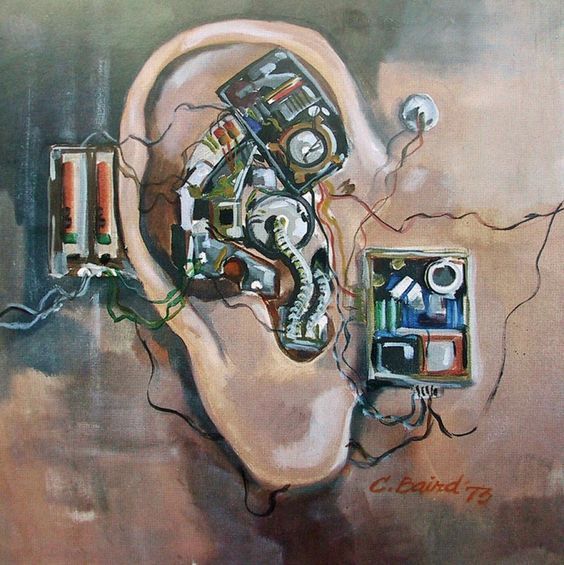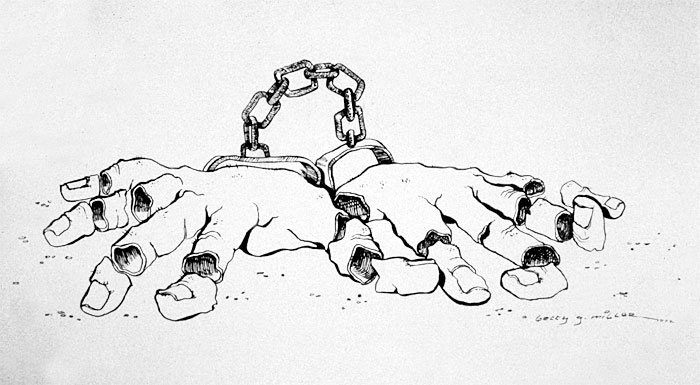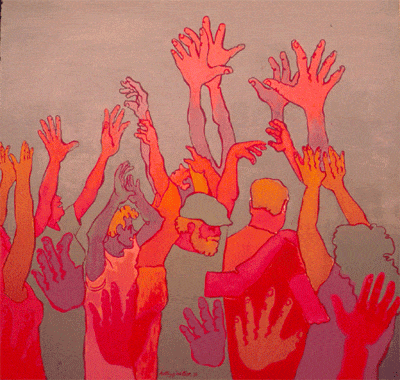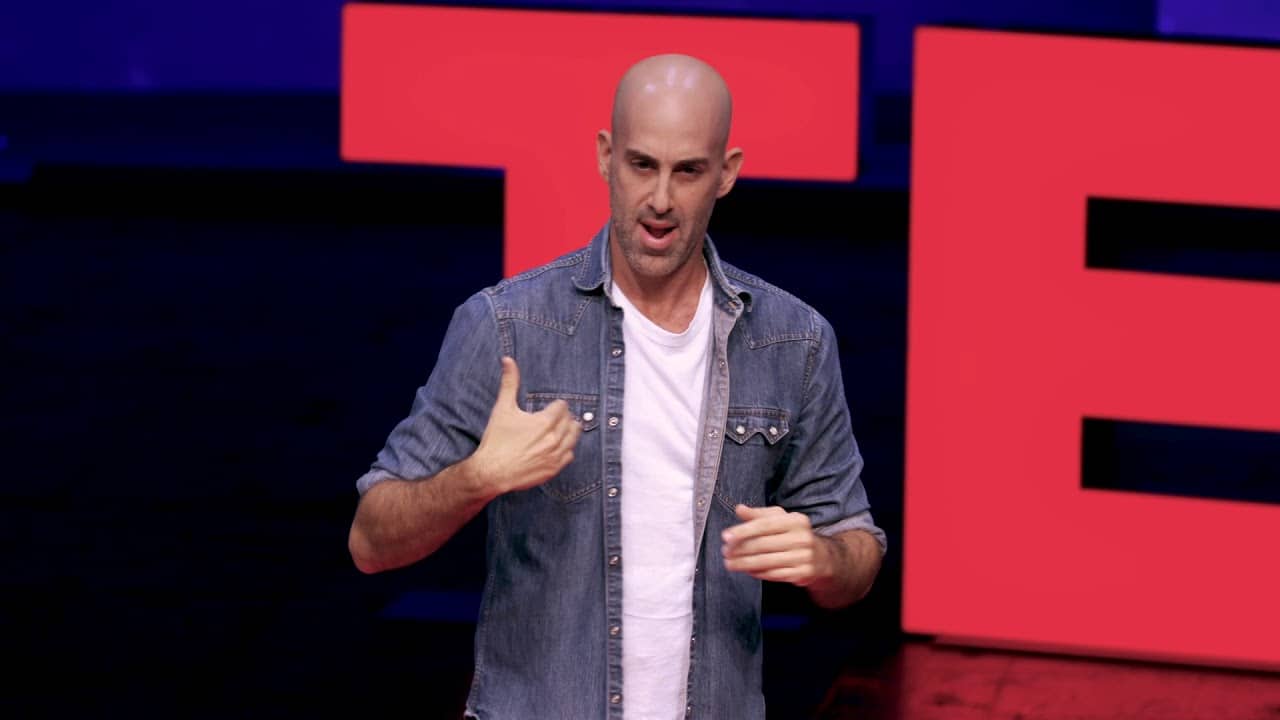The Benifits of Humor and Performing Arts in the Deaf Culture
The Deafened highly value the literature and art of their civilisation. Deaf Civilisation art and literature is how the Deaf share their values with futurity generations – their values of sign language and deafness, Deafened pedagogy, Deafened experiences, Deaf pride, and more than.
There is a wealth of Deaf fine art, poetry, stories, theater, media, and even jokes that teach Deafened Culture (most of which are non in a tangible form). Deaf children acquire how to fit in with Deaf culture from positive and negative feedback about their behavior and from the stories and literature that are passed down through the generations.
Deaf cultural stories are how Deaf people share their experiences and pass on their knowledge to the side by side generations. These stories are usually about what information technology was similar growing upwards deafened, experiencing misunderstandings, etc. Cultural stories are another great fashion for Deaf people to express themselves.
The world is designed for hearing people, and then hearing loss can stir up very stiff feelings. The arts offering an outlet for those feelings and always prove and support the manner Deaf people alive their lives—beingness Deaf and proud!
Deaf Art and ASL Art
Deaf fine art is a cultural fine art that reaches both positive and negative ends of the spectrum unlike whatsoever other. You tin can acquire so much near the Deaf simply by seeing the artwork that Deaf Culture produces.
Deaf people have experienced many negative life changing events throughout history. They've been strongly oppressed and labeled as "non-humans" in the early centuries and even have been forbidden to sign.
Deaf people have besides experienced the stiff positive connection and customs when learning sign language for the starting time time–like finally finding the lite in a night tunnel.
These positive and negative life experiences of the Deafened can and have been expressed through Deaf Fine art. The effects of the globe on the Deafened tin can clearly be seen in how Deaf artists express themselves on canvas.
ASL is a visual language and is not written. And then, it would seem obvious that the Deaf would be very corking on the visual arts. At that place are many famous Deafened artists who have continually and accurately portrayed the Deaf feel on their media of choice. Deafened culture itself is even passed downwardly "verbally" through storytelling, theater, and performances–not through books similar the hearing culture.
Chuck Baird was a famous American Deaf artist and one of the founders of the De'VIA fine art movement. De'VIA is a part of Deaf civilisation where the Deaf experience is expressed through visual art. While Deafened visual fine art has been created for centuries, the term De'VIA was starting time recognized as an art genre in 1989.

Mechanical Ear by Chuck Baird
One of Chuck Baird'southward almost notable pieces is "Mechanical Ear." This painting has been interpreted to mean many possible different things, merely the understood meanings are all rooted in the context of Deaf Culture.
Betty Thou. Miller (also known as Bettigee) was a famous Deaf American artist who is known as the "Mother of De'VIA."

Ameslan Prohibited past Betty G. Miller
One of Betty G. Miller's most notable pieces of art is the artwork to a higher place titled "Ameslan Prohibited." It was created by Betty 1972. The term "Ameslan" is an early give-and-take for ASL that is no longer used. The handcuffs correspond how forbidding sign language feels like enslavement to the deaf. And the broken fingers are a violent illustration of the repeated slapping of duke with a ruler when deafened children were caught using sign language.

Celebration of Hands by Betty G. Miller
Some other piece of artwork by Betty K. Miller is "Celebration of Hands." This painting was made in 1987 from the projection of a slide from the Spectrum: Focus on Deafened Artists outcome around 1978. The human being in the blue cap is Chuck Baird. [i]
Deaf civilisation art is more than just a painting or a drawing. It brings the Deaf community together. Deaf culture fine art puts the feelings that many Deaf people experience on canvas.
The strong negative and strong positive feelings that are shown in fine art of the Deaf are usually not felt only by the artist. These feelings are widespread throughout the Deaf customs. Looking into Deaf art, you tin peek into the heart of a Deaf person.
Deaf Poetry and ASL Poesy
Deaf poetry is expressed in ASL. Information technology is near incommunicable to translate ASL verse into English, so to truly experience this form of Deaf fine art, you must watch it.
Just as English poetry uses spoken/written rhyme and rhythm, ASL poetry does this using movement – a visual form of rhyme and rhythm. And the same manner the inflection of your voice shows mood and emotion in English, the inflection and facial expressions used when signing expresses the mood and emotion in ASL poetry.
Douglas Ridloff shares in his TEDx talk titled "Deaf Poets Society" [2]:

"I take 2 Deaf boys. They're so rare and so unique. I am blest and they are blessed because they can play with their sign language in their habitation environs, which is a safe space for them. When I watch them sign, I realize what a treasure sign language is and I thought about how to preserve information technology, and I realized it'southward through the arts. My objective is unproblematic: I just want my boys to comprehend their place in the lineage of the language and richness and the complexity of it.
Growing upwardly, I never had any Deaf function models until I was 16 years onetime and for the commencement time I saw a Deaf poet, Peter Cook, and his linguistic expression just blew my mind… I had this realization about what my thoughts were nigh sign language being so simple and for communication only. I realized that it had these other modalities, that it had this depth and this fiber to information technology.
[I] founded my ain Deaf Poets Society – one component of which is ASL SLAM. The mission of [ASL SLAM] is to provide a platform, to create a safe infinite for the Deafened customs to play with their language of signs, and to learn to play and to have fun with that."
One time type of ASL poetry that Douglas Ridloff mentions is "visual vernacular" which is ASL poesy expressed using mostly gestures and visual representations. Since this type of poetry uses the visual portion of ASL instead of the language portion, it has the potential to be understood in international sign language communities also equally by hearing communities who do not know ASL.
Douglas Ridloff collaborated with musicians and created beautiful poetry he performed using both visual colloquial ASL and music during his talk. About this slice, he says:
"So that's a visual poetic composition merged with a musical limerick. The goal of that is to exist able to reach out, not just to the international Deafened community, but as well to the broader hearing customs so that you lot all can come across and understand the richness and the complexity that sign language has within it.
So now I want you as you leave to go seek out your Deafened communities to collaborate with them and make the world a safe infinite. Merely every bit I want my boys to go along the lineage of the language. We want the entire world to be a prophylactic infinite for the Deaf community."
One ASL poem that is a great expression of Deaf Culture is "Attend and Encompass… information technology will Thrive" by John Maucere. [iii]
ASL poetry has special characteristics that prepare information technology apart from spoken poetry. For case, in ASL poetry, you tin can sign with your left and correct hand at the same fourth dimension. This can allow yous to express two different ideas at once. You can see this in the to a higher place verse form where John tin can show the feelings of both parents at the aforementioned fourth dimension by signing with both hands.
Also, visual and spatial characteristics in ASL poetry can show ideas without having to sign them explicitly. You lot can run across this in the above verse form where the child in the poem is shown as visually shorter to represent a kid without John having to sign the word "child" or "baby" at all.
Some other wonderful cultural Deaf verse form is "Through the Easily" signed past Erica Tara Lily Parker. [iv]
Every bit yous can see, ASL poetry can beautifully limited Deaf cultural feelings and experiences. And seeing ASL verse for the first time, you may as well notice how ASL poetry is unlike in such a beautiful style compared to spoken poesy. While creating visual images tin can exist difficult in spoken poetry, this is very easy in ASL.
And the visual, descriptive imagery of ASL poesy can pigment a picture in space and arrive come to life in such a way to sometimes allow even those who do non know ASL to empathise and enjoy the message of the poem.
ASL Handshape Stories
Handshape stories are a creative and more simple grade of storytelling and poetry in ASL. Handshape stories are stories that are signed using the letters of the alphabet, numbers, or other handshapes.
The same way that hearing children acquire parts of linguistic communication through songs, Deaf children larn this through Deaf literature. For example, with handshape stories, Deaf children can play around with and learn each alphabetic character of the alphabet when learning a story.
There are iii kinds of handshape stories:
- ABC Stories – ABC stories use simply the handshapes of the manual alphabet in guild from A to Z.
- Number Stories – Number stories are like ABC stories, but use numbers instead of letters in a pattern.
- One Handshape Stories – One-handshape stories are stories that use only one handshape throughout the entire story.
When signing these stories, yous need to follow all grammatical rules as well as keep it in an organized sequence.
This is a beautifully done handshape story past Patrick "Mr. Shineyhead" Fischer near the Titanic: [v]
This is a wonderful instance of a handshape story. The detailed, descriptive usage of the alphabet in this story is truly remarkable.
Handshape stories tin can also be used to communicate Deaf cultural ideas. This is a fantastic cultural handshape story past Maryjean "Mj" Shahen: [six]
Not only are handshape stories a fun way to play with the language of ASL, but they are also very educational for Deaf children and a truly special way to pass down cultural stories and values through the generations.
Deaf Jokes
Deaf jokes are also an essential part of Deaf literature and are usually passed downwardly "orally".
There are two master types of jokes in Deafened culture. The first type is a joke in which the Deaf person wins. These jokes don't necessarily brand fun of hearing people, but they favor Deafened culture and the Deaf fashion of life.
An case of this blazon of joke is one about a Deafened couple at a cabin:
A deaf couple bank check into a motel and go to bed early on. The married woman wakes her husband in the middle of the dark complaining of a headache. She asks him to go to the car to get some aspirin from the glove compartment. Groggy with slumber, he struggles to get up, puts on his robe, and leaves the room to get to the car. He finds the aspirin, and with the bottle in hand he turns toward the motel. Merely he cannot remember which room is his. Subsequently thinking a moment, he returns to the car, places his hand on the horn, holds information technology downward, and waits. Very quickly the cabin rooms light upwardly… all but one. It's his wife's room, of course. He locks upwardly his car and heads toward the only room without a calorie-free on.
In this joke, the Deaf person "wins" because he is deaf.
The second type is a joke related to the linguistics of ASL. For instance, the production or mis-production of a sign can be humorous in sure situations.
An example of this blazon of joke is 1 most King Kong and a young lady:
This joke is funny considering the sign for "marry" is one hand coming downwards and clasping the other. So, the production of this sign caused Male monarch Kong to crush his new dearest.
Every bit you can see, the Deaf highly value their art and literature as part of their Culture. From the visual arts to ASL poetry, storytelling, handshape stories, and Deaf jokes, the art and literature of the Deaf is how cultural values, beliefs, and experiences are passed downwardly through the generations. ASL is a rich, vibrant language that goes hand-in-hand with Deaf Civilisation to create some of the most cute fine art and literature y'all may e'er see.
Resources:
[1] "Betty's Painting, 'Commemoration of Hands Featured on 'Glee!'" Royal Swirl Arts. 25 September 2013. https://purpleswirlarts.wordpress.com/2013/09/25/bettys-painting-celebration-of-easily-featured-on-glee-9262013/. Accessed 6 July 2020.
[ii] Ridloff, Douglas. "Deaf Poets Guild." TEDxVienna. 10 December 2018. https://youtu.be/0LZGYwDO-QE. Accessed 9 July 2020.
[3] Maucere, John. "Nourish and Comprehend… it will Thrive." ASLized! 6 February 2012. https://youtu.exist/22jNRRpsj24. Accessed half-dozen July 2020.
[four] Parker, Erica Tara Lily. "Through the Easily." ASLized! 26 August 2013. https://youtu.be/EDICsw1-9oQ. Accessed 6 July 2020.
[v] Storyteller and video by Patrick "Mr. Shineyhead" Fischer of Deafened Patrick Fischer, Inc. (deafpatrickfischer.com).
[half-dozen] Shahen, Maryjean. "ABC Story Deaf Kid of Hearing Parents." Mj Shahen. 9 Feb 2020. https://youtu.be/Xa9zrIK5Axk. Accessed ix July 2020.
Source: https://www.startasl.com/deaf-culture-art-and-literature/